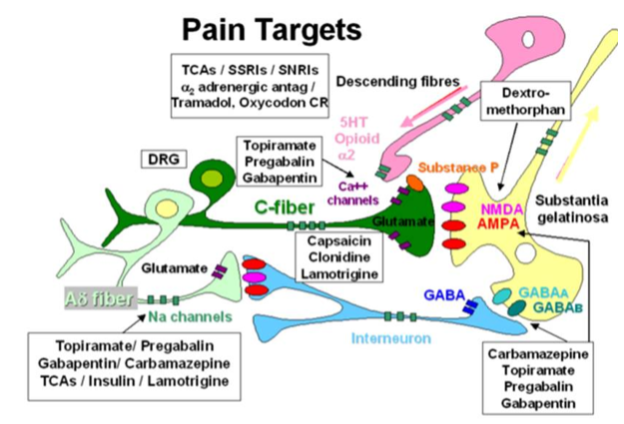
Figure 14. Schematic representation of the generation of pain. (A) Normal: Central terminals of c-afferents project into the dorsal horn and make contact with secondary pain-signaling neurons. Mechanoreceptive Aβ afferents project without synaptic transmission into the dorsal columns (not shown) and also contact secondary afferent dorsal horn neurons. (B) C-fiber sensitization: Spontaneous activity in peripheral nociceptors (peripheral sensitization, black stars) induces changes in the central sensory processing, leading to spinal-cord hyperexcitability (central sensitization, gray star) that causes input from mechanoreceptive Aβ (light touch) and Aδ fibers (punctuate stimuli) to be perceived as pain (allodynia). (C) C-fiber loss: C-nociceptor degeneration and novel synaptic contacts of Aβ fibers with “free” central nociceptive neurons, causing dynamic mechanical allodynia. (D) Central disinhibition: Selective damage of cold-sensitive Aδ fibers that leads to central disinhibition, resulting in cold hyperalgesia. Sympat, sympathetic nerve
